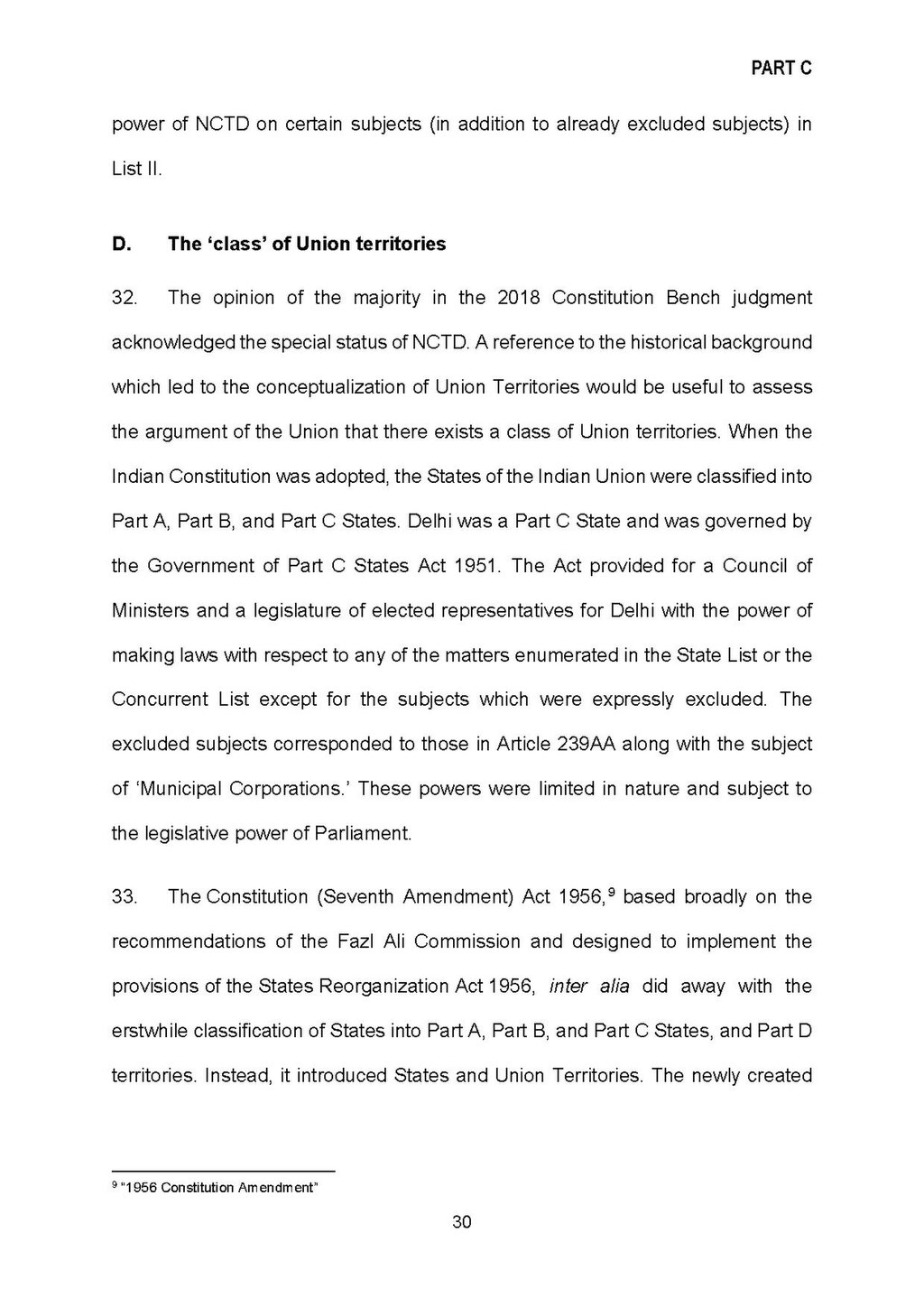power of NCTD on certain subjects (in addition to already excluded subjects) in List II.
32. The opinion of the majority in the 2018 Constitution Bench judgment acknowledged the special status of NCTD. A reference to the historical background which led to the conceptualization of Union Territories would be useful to assess the argument of the Union that there exists a class of Union territories. When the Indian Constitution was adopted, the States of the Indian Union were classified into Part A, Part B, and Part C States. Delhi was a Part C State and was governed by the Government of Part C States Act 1951. The Act provided for a Council of Ministers and a legislature of elected representatives for Delhi with the power of making laws with respect to any of the matters enumerated in the State List or the Concurrent List except for the subjects which were expressly excluded. The excluded subjects corresponded to those in Article 239AA along with the subject of ‘Municipal Corporations.’ These powers were limited in nature and subject to the legislative power of Parliament.
33. The Constitution (Seventh Amendment) Act 1956[1], based broadly on the
recommendations of the Fazl Ali Commission and designed to implement the provisions of the States Reorganization Act 1956, inter alia did away with the erstwhile classification of States into Part A, Part B, and Part C States, and Part D territories. Instead, it introduced States and Union Territories. The newly created
- ↑ “1956 Constitution Amendment”
30
